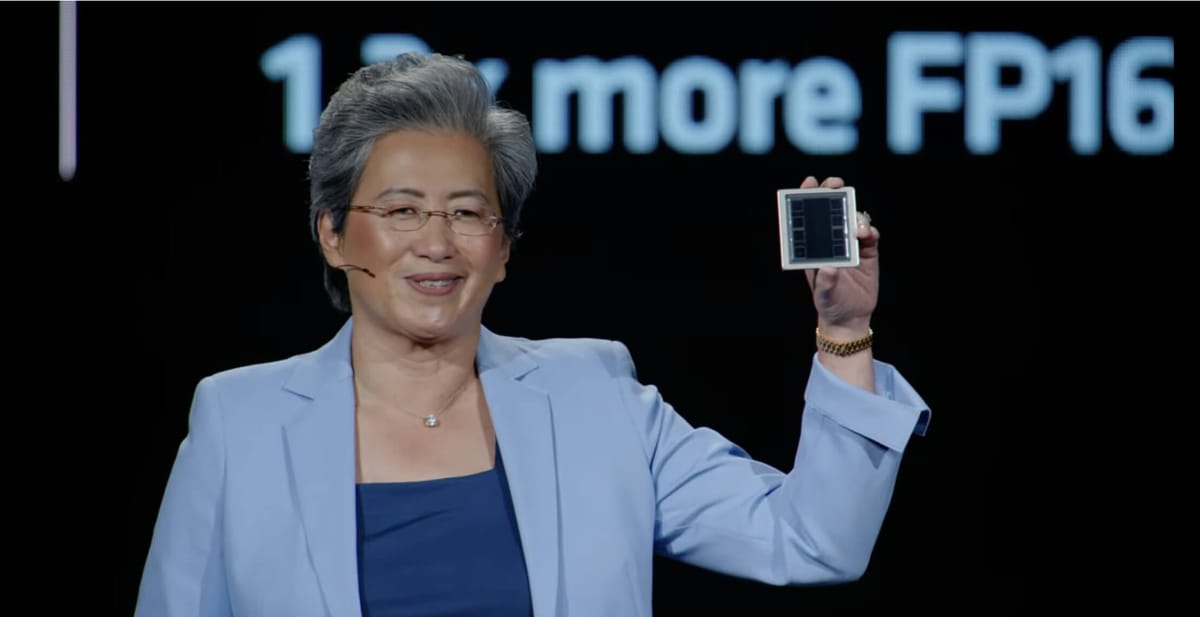
AMD's latest AI accelerator, the Instinct MI325X, marks an ambitious move to challenge NVIDIA's grip on the data center AI GPU market. The MI325X is a direct response to NVIDIA's upcoming Blackwell chips, signaling AMD's intent to capture a larger share of the AI hardware market, which has largely been dominated by NVIDIA. This launch positions AMD as a serious competitor, offering increased memory capacity, better bandwidth, and significant advancements in AI inference performance.
The Instinct MI325X is built on AMD's CDNA 3 architecture and features an impressive 256GB of HBM3E memory, providing 6TB/s of bandwidth. This gives it an edge over NVIDIA's H200 GPUs in memory capacity and bandwidth, delivering a claimed 40% faster inference performance in models like Meta's Llama 3.1. These specifications are designed to address the growing need for high-performance hardware in AI data centers, crucial for managing generative AI workloads. Forrest Norrod, AMD's EVP, noted that the MI325X is tailored to offer "the performance customers need to bring AI infrastructure, at scale, to market faster."
To complement its GPU offerings, AMD introduced the Pensando Salina DPU and Pollara 400 NIC for improved AI networking. These components aim to reduce latency and optimize AI application performance, forming part of AMD's strategy to build an end-to-end AI solution that rivals NVIDIA's dominant ecosystem.
Despite the promising specifications, NVIDIA remains a formidable competitor. NVIDIA's Blackwell GPUs, which will begin shipping in 2025, are expected to set a new bar for data center AI performance. Additionally, NVIDIA has already announced its Rubin architecture, set to succeed Blackwell in 2026. The Rubin platform is expected to boast impressive capabilities, including NVLink 6 Switch performance up to 3,600 GB/s and the CX9 SuperNIC providing up to 1,600 GB/s. These advancements underline the challenge AMD faces in trying to significantly disrupt NVIDIA's market dominance.
While AMD's renewed focus on its ROCm open software stack—which now includes support for major AI frameworks like PyTorch and models hosted by Hugging Face—could make AMD's ecosystem more appealing to developers, NVIDIA's software stack remains a significant advantage. NVIDIA's groundbreaking TensorRT-LLM, which can double inference performance of language models, continues to be a key differentiator that keeps many developers within NVIDIA's ecosystem. Historically, NVIDIA's proprietary CUDA language has been a major barrier for competitors, and despite AMD's investment in open software support, catching up to NVIDIA's mature software ecosystem will be an uphill battle.
Looking ahead, AMD is already previewing its next-generation Instinct MI350 series, set for release in 2025. The MI350 is projected to deliver a 35-fold increase in inference performance compared to its predecessor. This aggressive roadmap demonstrates AMD's intent to not just catch up with NVIDIA but, perhaps, to surpass it in certain AI workloads. However, NVIDIA's future Rubin architecture will likely set an even higher performance standard, making it clear that AMD still has significant ground to cover.
The implications of AMD's announcements are significant. By positioning itself as a viable alternative to NVIDIA, AMD could influence pricing and availability in the AI GPU market—a market that AMD CEO, Lisa Su says could reach $500 billion by 2028. However, NVIDIA's continued dominance is not assured, especially if AMD continues to deliver on its promises and attract partnerships like Meta and Microsoft, both of which are reportedly using AMD's GPUs in their data centers.
The MI325X represents AMD's most competitive AI offering to date, but it's unlikely to significantly erode NVIDIA's market leadership in the near term. While AMD's advancements signal intensifying competition in the GPU market, NVIDIA's entrenched position and upcoming Rubin architecture present formidable obstacles.
AMD's strategy of annual releases and open ecosystem development may narrow the gap, but overcoming NVIDIA's software advantages and market inertia remains a significant challenge. The AI chip landscape is evolving rapidly, but NVIDIA's strong momentum and pipeline of innovations suggest its dominance will persist for the foreseeable future.

